解题思路:
根据题意,可按照下图的思路,总结出 “递推公式” (即转移方程)。
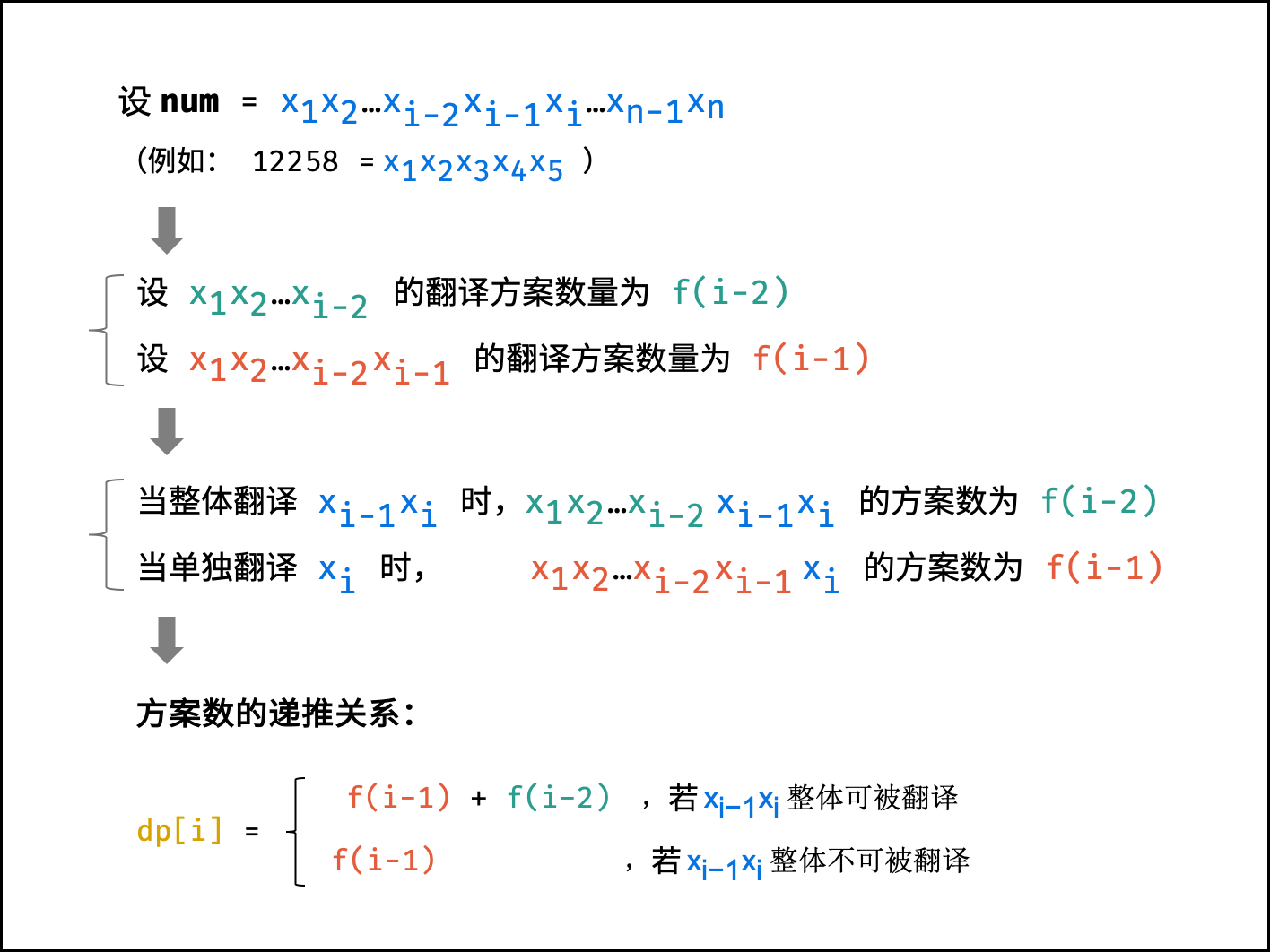
因此,此题可用动态规划解决,以下按照流程解题。
动态规划解析:
记数字 $num$ 第 $i$ 位数字为 $x_i$ ,数字 $num$ 的位数为 $n$ ; 例如: $num = 12258$ 的 $n = 5$ , $x_1 = 1$ 。
状态定义: 设动态规划列表 $dp$ ,$dp[i]$ 代表以 $x_i$ 为结尾的数字的翻译方案数量。
转移方程: 若 $x_i$ 和 $x_{i-1}$ 组成的两位数字可被整体翻译,则 $dp[i] = dp[i - 1] + dp[i - 2]$ ,否则 $dp[i] = dp[i - 1]$ 。
$$ dp[i] = \begin{cases} dp[i - 1] + dp[i - 2] & {, (10 x_{i-1} + x_i) \in [10,25]} \ dp[i - 1] & {, (10 x_{i-1} + x_i) \in [0, 10) \cup (25, 99]} \end{cases} $$
可被整体翻译的两位数区间分析: 当 $x_{i-1} = 0$ 时,组成的两位数无法被整体翻译(例如 $00, 01, 02, \cdots$ ),大于 $25$ 的两位数也无法被整体翻译(例如 $26, 27, \cdots$ ),因此区间为 $[10, 25]$ 。
初始状态: $dp[0] = dp[1] = 1$ ,即 “无数字” 和 “第 $1$ 位数字” 的翻译方法数量均为 $1$ ;
返回值: $dp[n]$ ,即此数字的翻译方案数量;
Q: 无数字情况 $dp[0] = 1$ 从何而来? A: 当 $num$ 第 $1, 2$ 位的组成的数字 $\in [10,25]$ 时,显然应有 $2$ 种翻译方法,即 $dp[2] = dp[1] + dp[0] = 2$ ,而显然 $dp[1] = 1$ ,因此推出 $dp[0] = 1$ 。
方法一:字符串遍历
- 为方便获取数字的各位 $x_i$ ,考虑先将数字 $num$ 转化为字符串 $s$ ,通过遍历 $s$ 实现动态规划。
- 通过字符串切片 $s[i - 2:i]$ 获取数字组合 $10 x_{i-1} + x_i$ ,通过对比字符串 ASCII 码判断字符串对应的数字区间。
- 空间使用优化: 由于 $dp[i]$ 只与 $dp[i - 1]$ 有关,因此可使用两个变量 $a, b$ 分别记录 $dp[i]$ , $dp[i - 1]$ ,两变量交替前进即可。此方法可省去 $dp$ 列表使用的 $O(N)$ 的额外空间。
复杂度分析:
- 时间复杂度 $O(N)$ : $N$ 为字符串 $s$ 的长度(即数字 $num$ 的位数 $\log(num)$ ),其决定了循环次数。
- 空间复杂度 $O(N)$ : 字符串 $s$ 使用 $O(N)$ 大小的额外空间。
<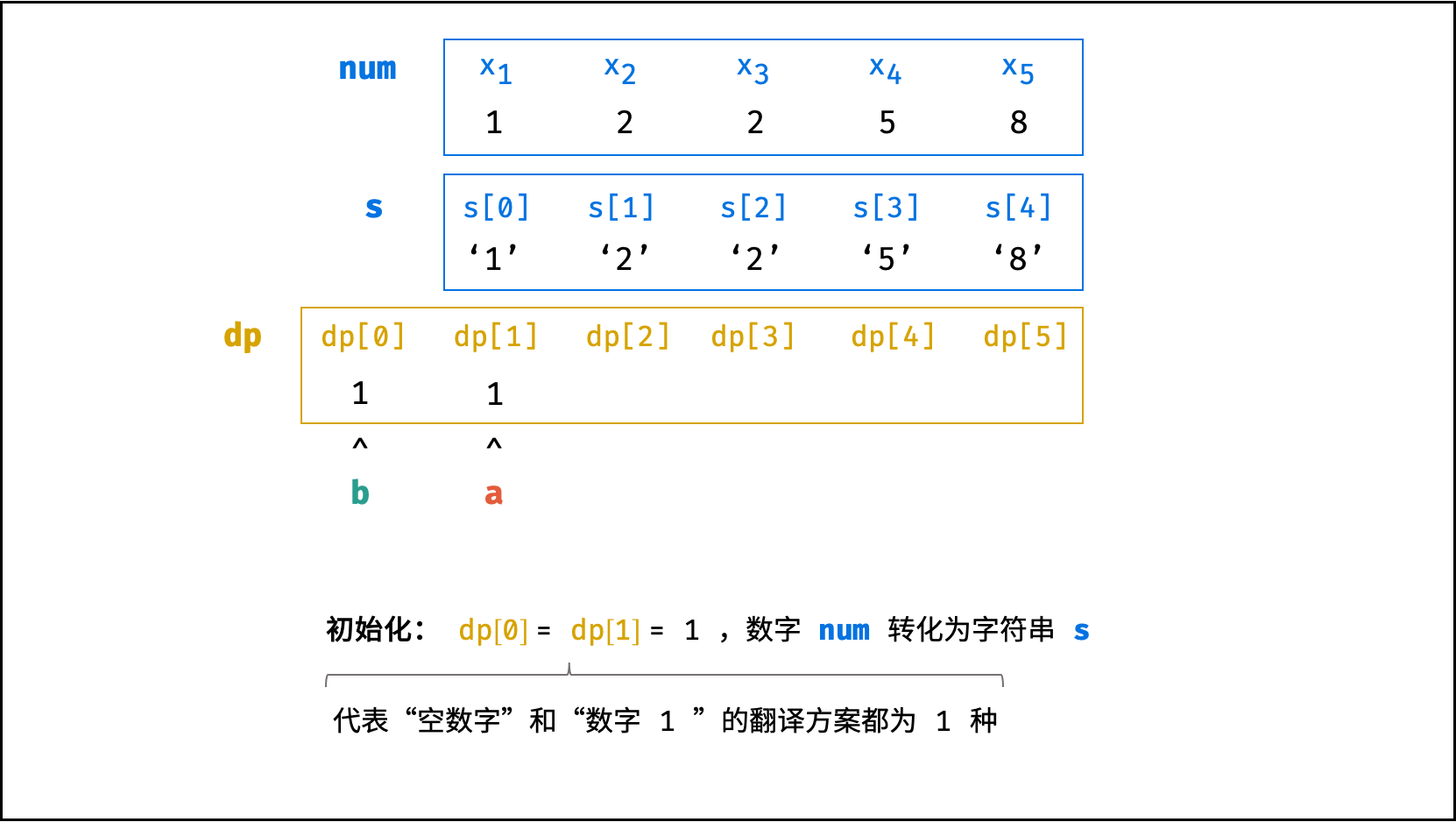 ,
,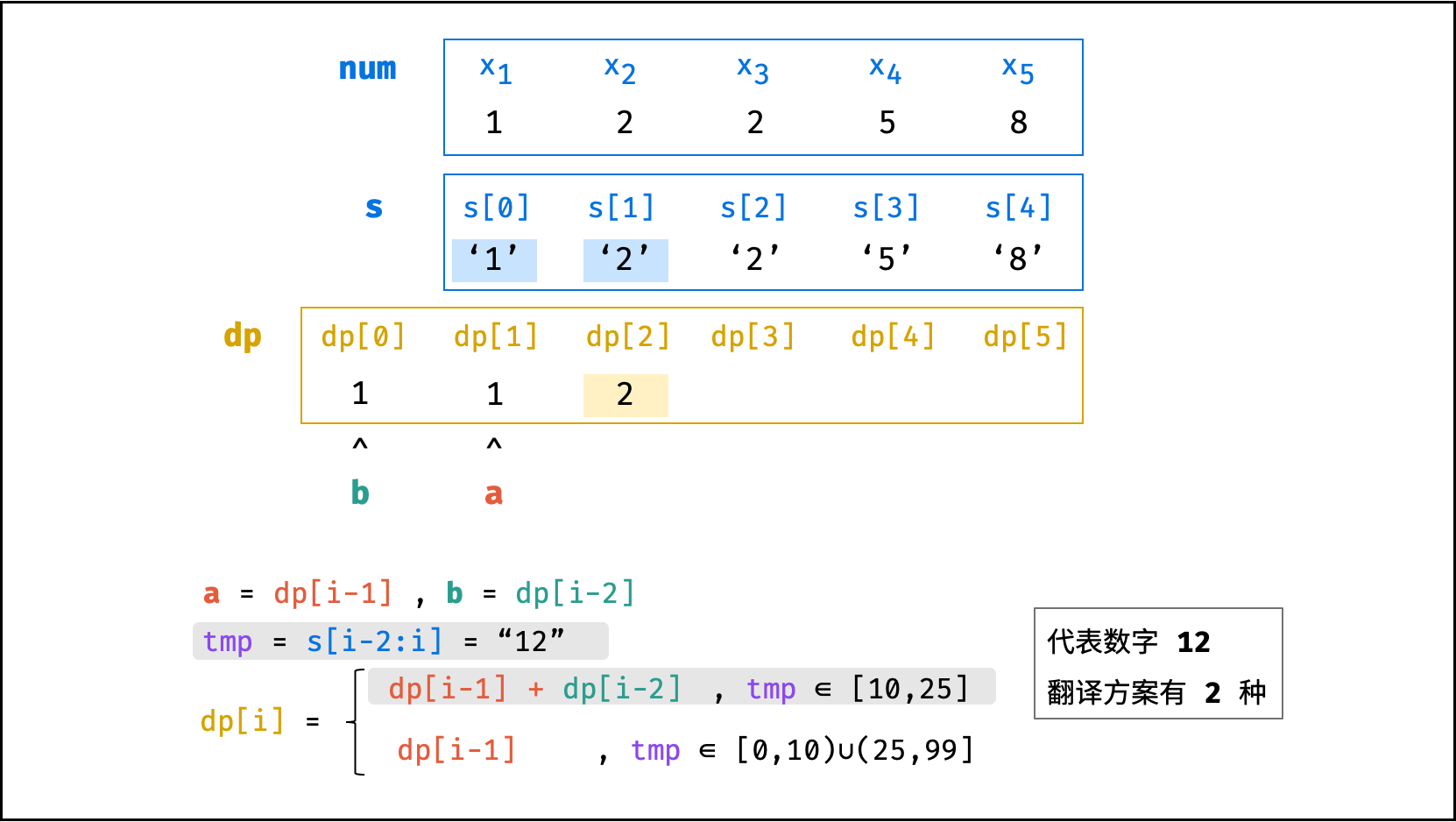 ,
, ,
,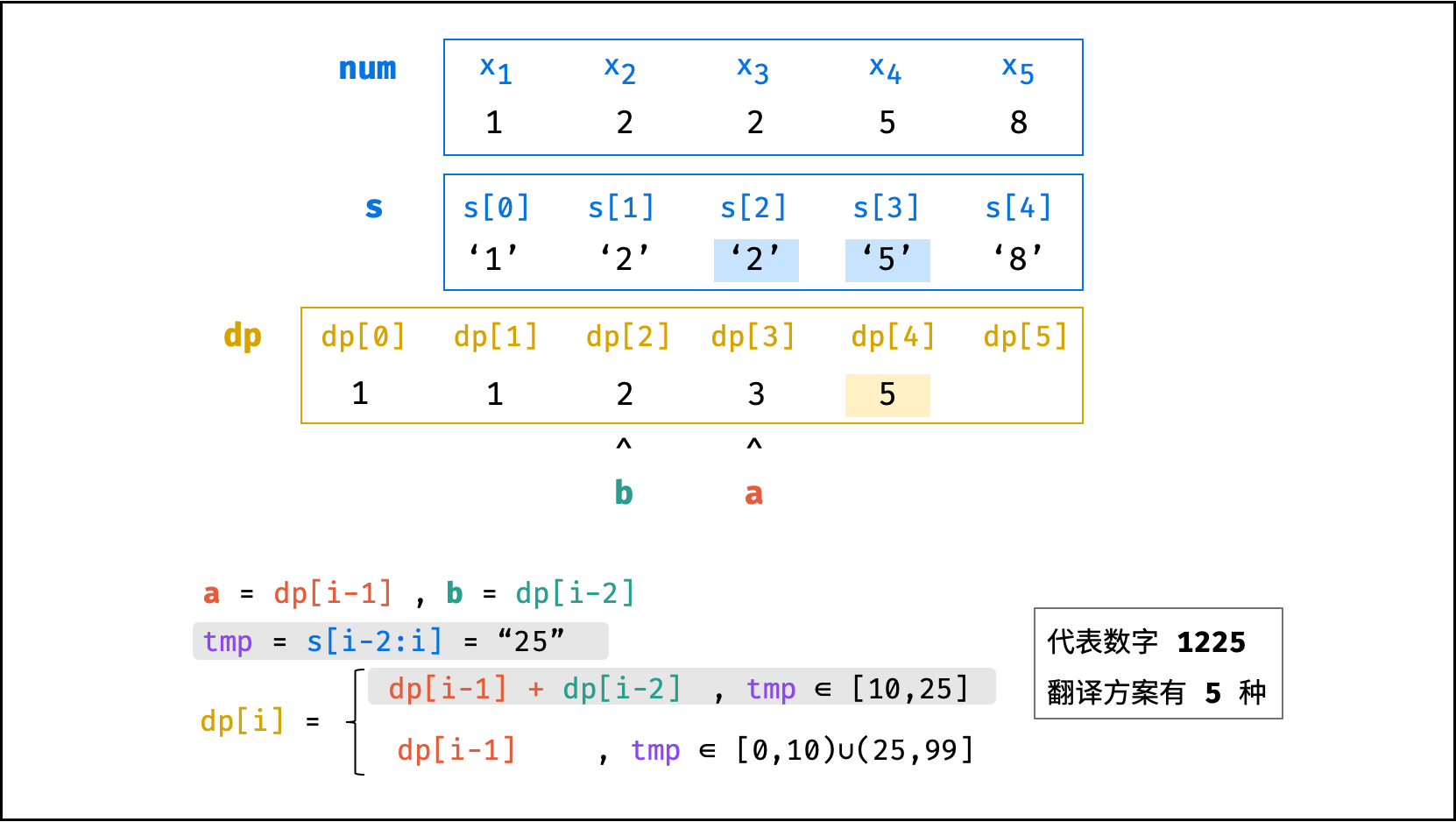 ,
, ,
,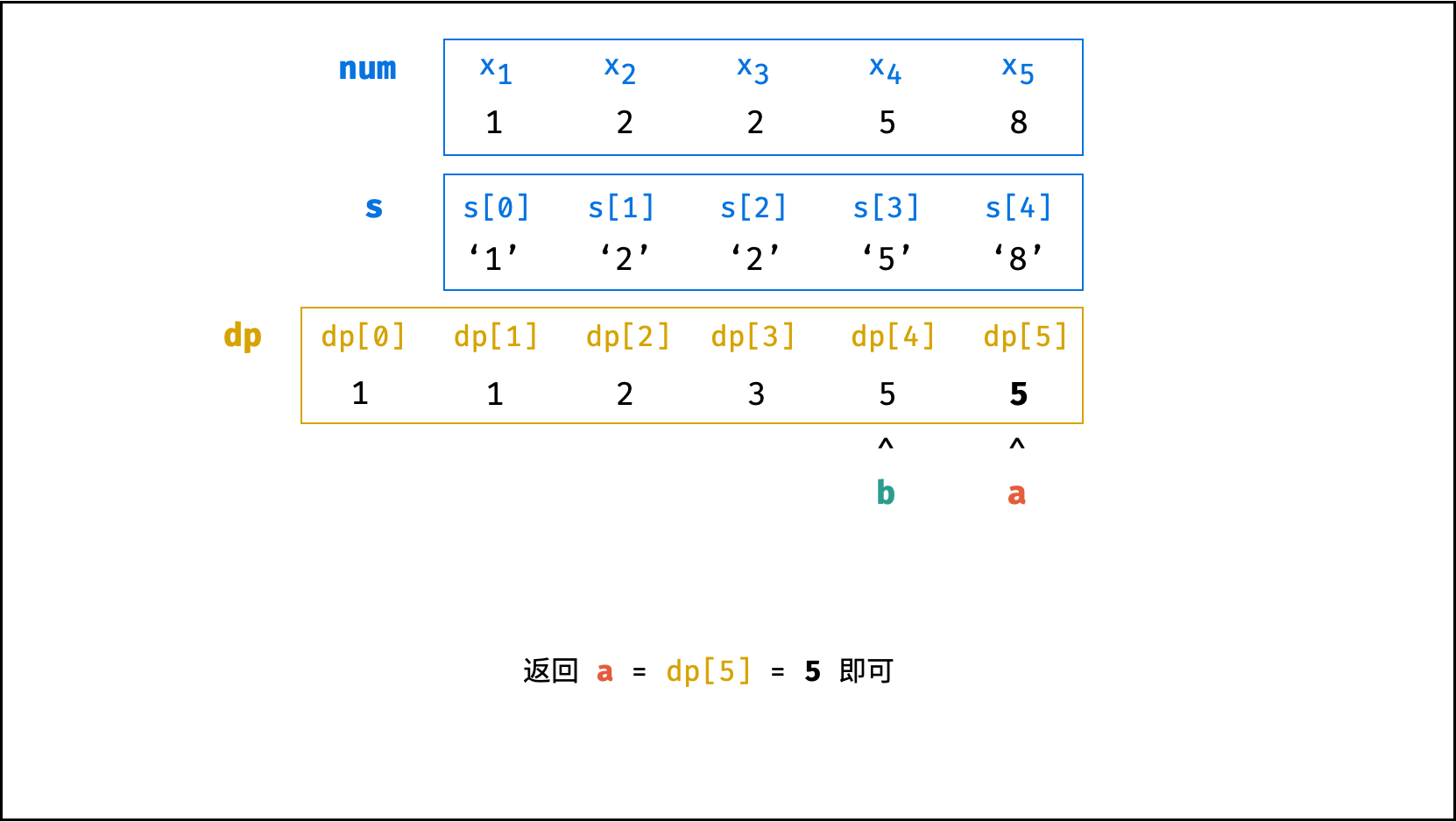 >
>
代码:
由于 Python 语言特性,可不使用临时变量 $tmp$ 和 $c$ ,若阅读不畅可转至第三栏代码。
class Solution {
public int translateNum(int num) {
String s = String.valueOf(num);
int a = 1, b = 1;
for(int i = 2; i <= s.length(); i++) {
String tmp = s.substring(i - 2, i);
int c = tmp.compareTo("10") >= 0 && tmp.compareTo("25") <= 0 ? a + b : a;
b = a;
a = c;
}
return a;
}
}class Solution {
public:
int translateNum(int num) {
string s = to_string(num);
int a = 1, b = 1, len = s.size();
for(int i = 2; i <= len; i++) {
string tmp = s.substr(i - 2, 2);
int c = tmp.compare("10") >= 0 && tmp.compare("25") <= 0 ? a + b : a;
b = a;
a = c;
}
return a;
}
};class Solution:
def translateNum(self, num: int) -> int:
s = str(num)
a = b = 1
for i in range(2, len(s) + 1):
a, b = (a + b if "10" <= s[i - 2:i] <= "25" else a), a
return aclass Solution:
def translateNum(self, num: int) -> int:
s = str(num)
a = b = 1
for i in range(2, len(s) + 1):
tmp = s[i - 2:i]
c = a + b if "10" <= tmp <= "25" else a
b = a
a = c
return a此题的动态规划计算是 对称的 ,即 从左向右 遍历(从第 $dp[2]$ 计算至 $dp[n]$ )和 从右向左 遍历(从第 $dp[n - 2]$ 计算至 $dp[0]$ )所得方案数一致。从右向左遍历的代码如下所示。
class Solution {
public int translateNum(int num) {
String s = String.valueOf(num);
int a = 1, b = 1;
for(int i = s.length() - 2; i > -1; i--) {
String tmp = s.substring(i, i + 2);
int c = tmp.compareTo("10") >= 0 && tmp.compareTo("25") <= 0 ? a + b : a;
b = a;
a = c;
}
return a;
}
}class Solution {
public:
int translateNum(int num) {
string s = to_string(num);
int a = 1, b = 1, len = s.size();
for(int i = len - 2; i > -1; i--) {
string tmp = s.substr(i, 2);
int c = tmp.compare("10") >= 0 && tmp.compare("25") <= 0 ? a + b : a;
b = a;
a = c;
}
return a;
}
};class Solution:
def translateNum(self, num: int) -> int:
s = str(num)
a = b = 1
for i in range(len(s) - 2, -1, -1):
a, b = (a + b if "10" <= s[i:i + 2] <= "25" else a), a
return a方法二:数字求余
上述方法虽然已经节省了 $dp$ 列表的空间占用,但字符串 $s$ 仍使用了 $O(N)$ 大小的额外空间。
空间复杂度优化:
- 利用求余运算 $num % 10$ 和求整运算 $num // 10$ ,可获取数字 $num$ 的各位数字(获取顺序为个位、十位、百位…)。
- 运用 求余 和 求整 运算实现,可实现 从右向左 的动态规划计算。而根据上述动态规划 “对称性” ,可知从右向左计算是正确的。
- 自此,字符串 $s$ 的空间占用也被省去,空间复杂度从 $O(N)$ 降至 $O(1)$ 。
复杂度分析:
- 时间复杂度 $O(N)$ : $N$ 为字符串 $s$ 的长度,即数字 $num$ 的位数 $\log(num)$ ,其决定了循环次数。
- 空间复杂度 $O(1)$ : 几个变量使用常数大小的额外空间。
<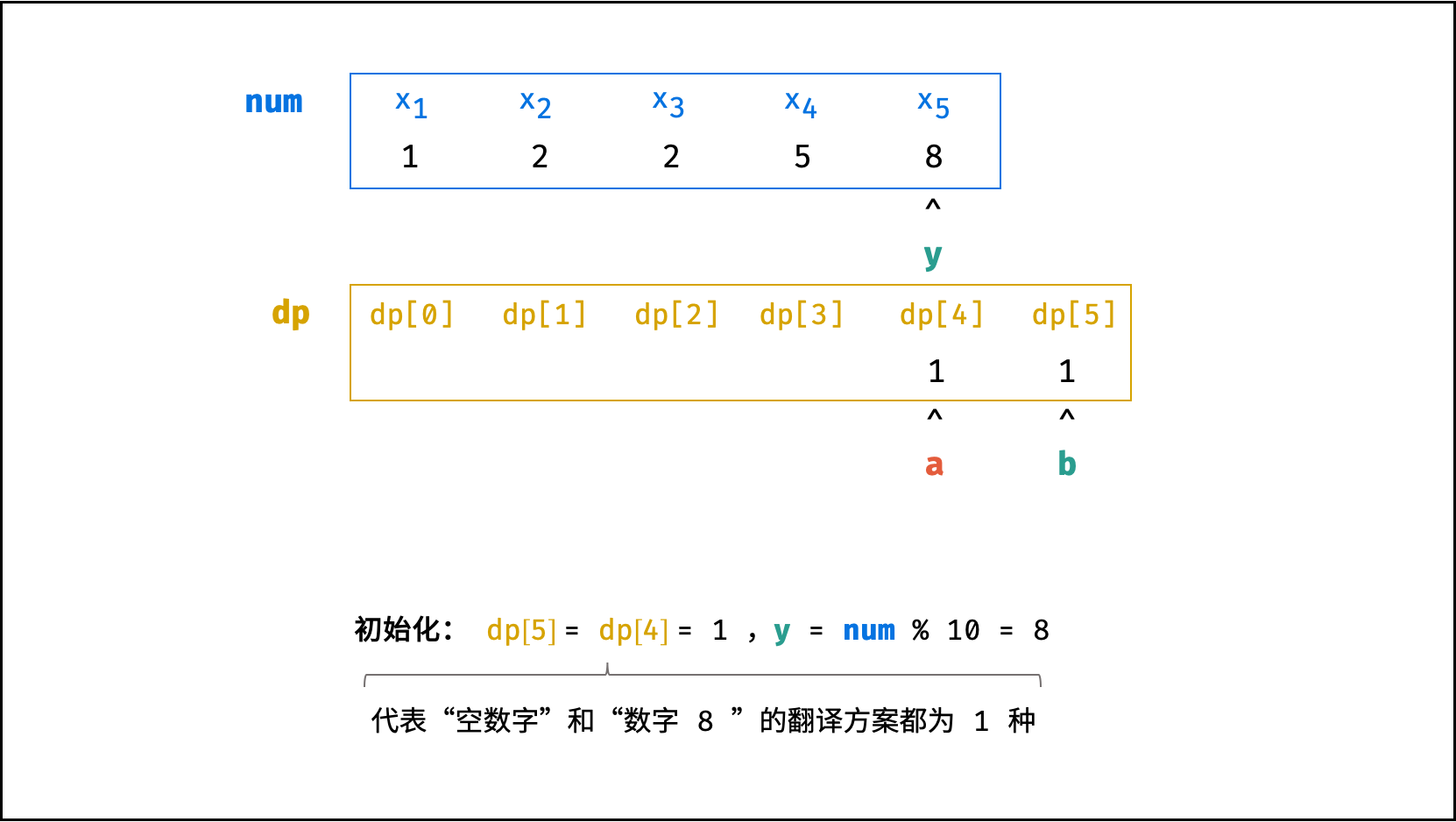 ,
,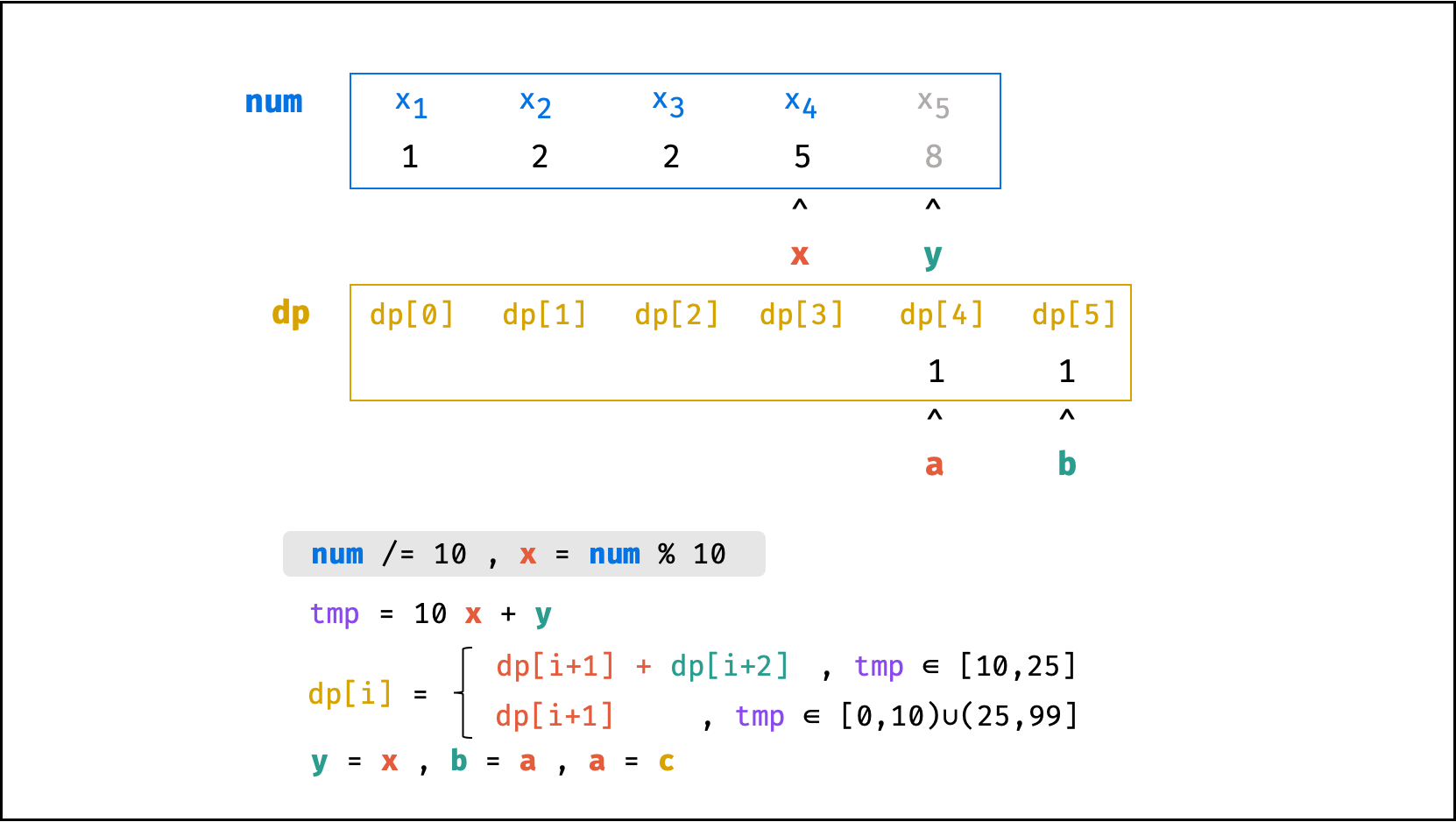 ,
,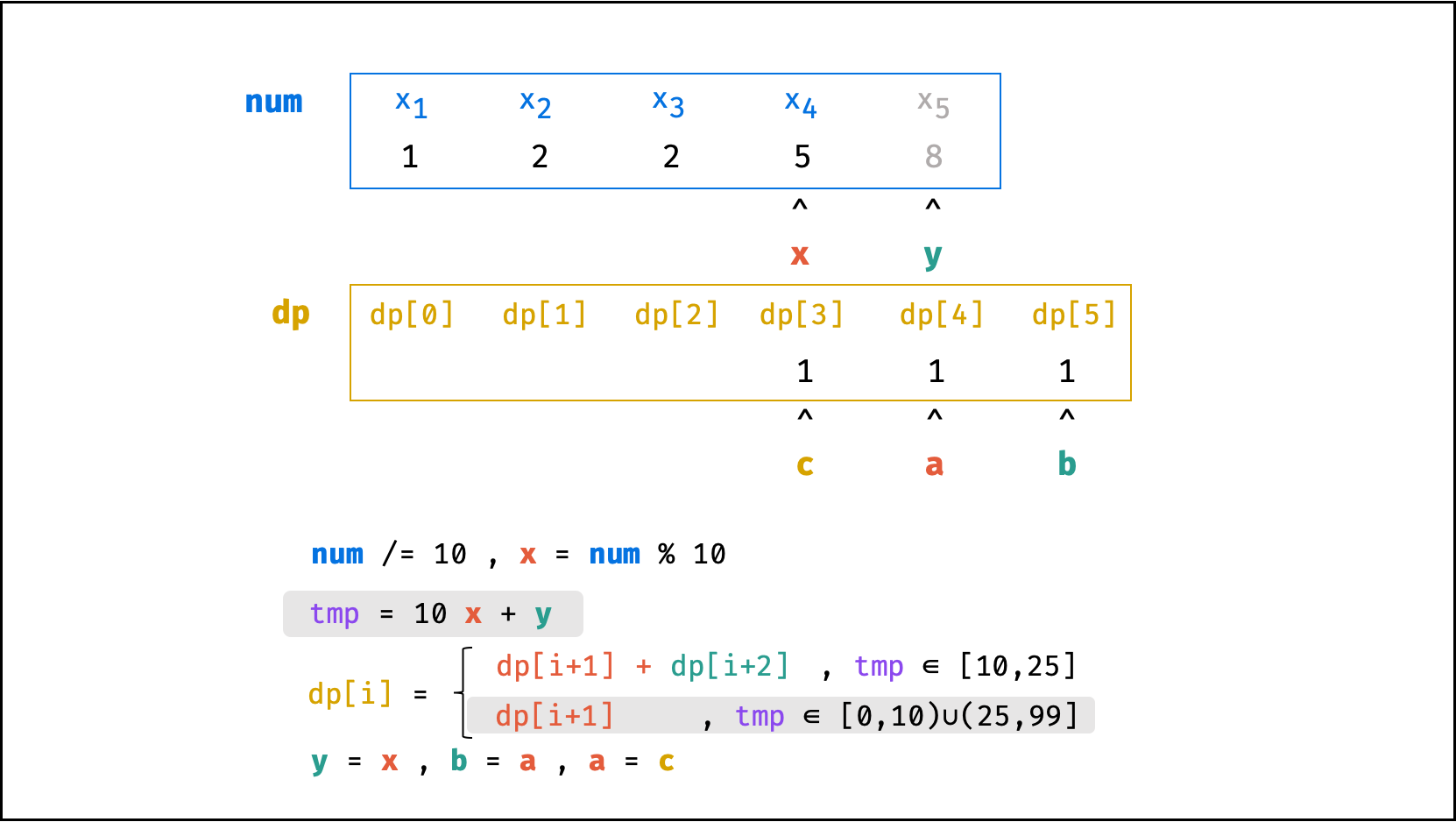 ,
,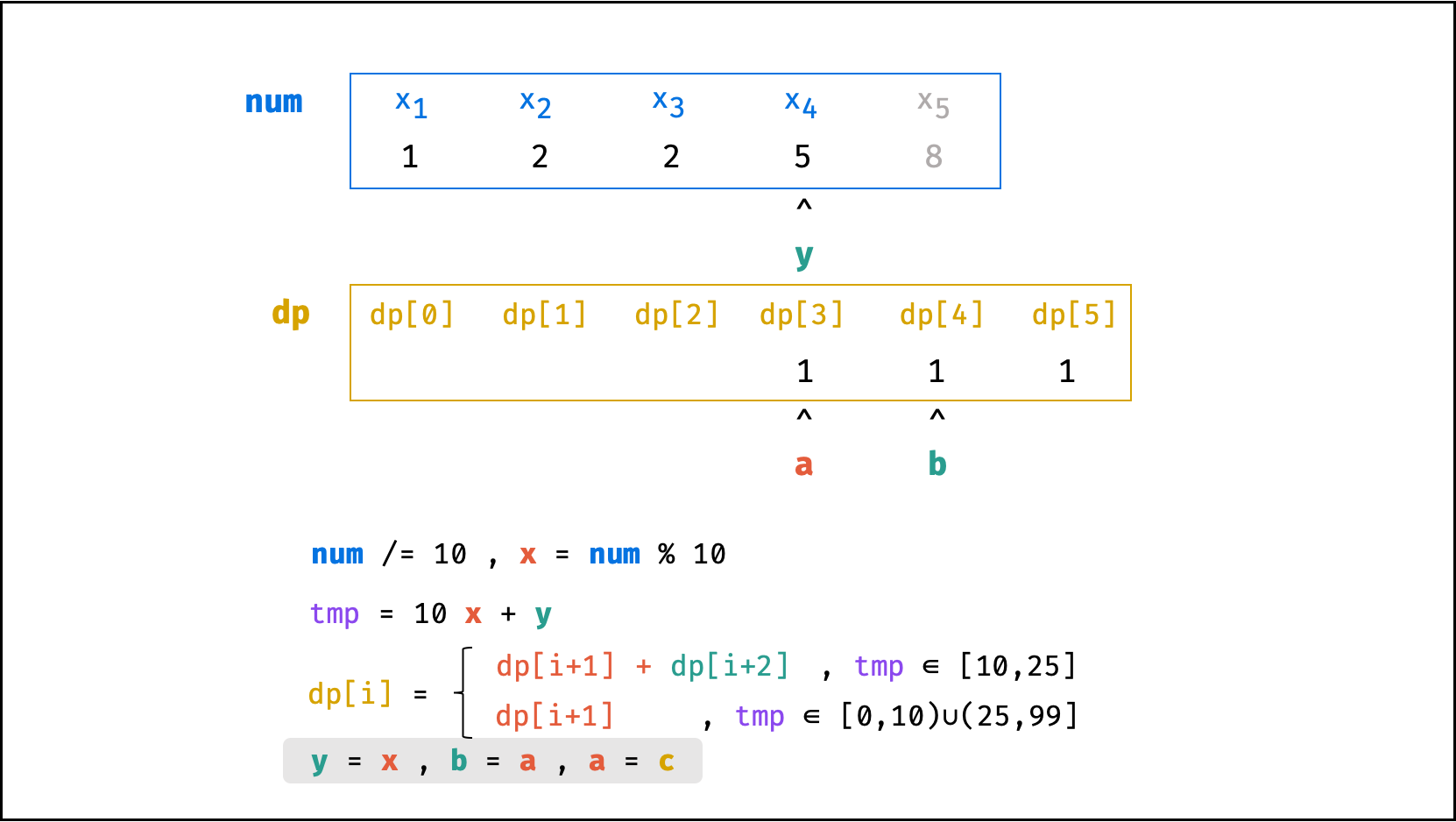 ,
,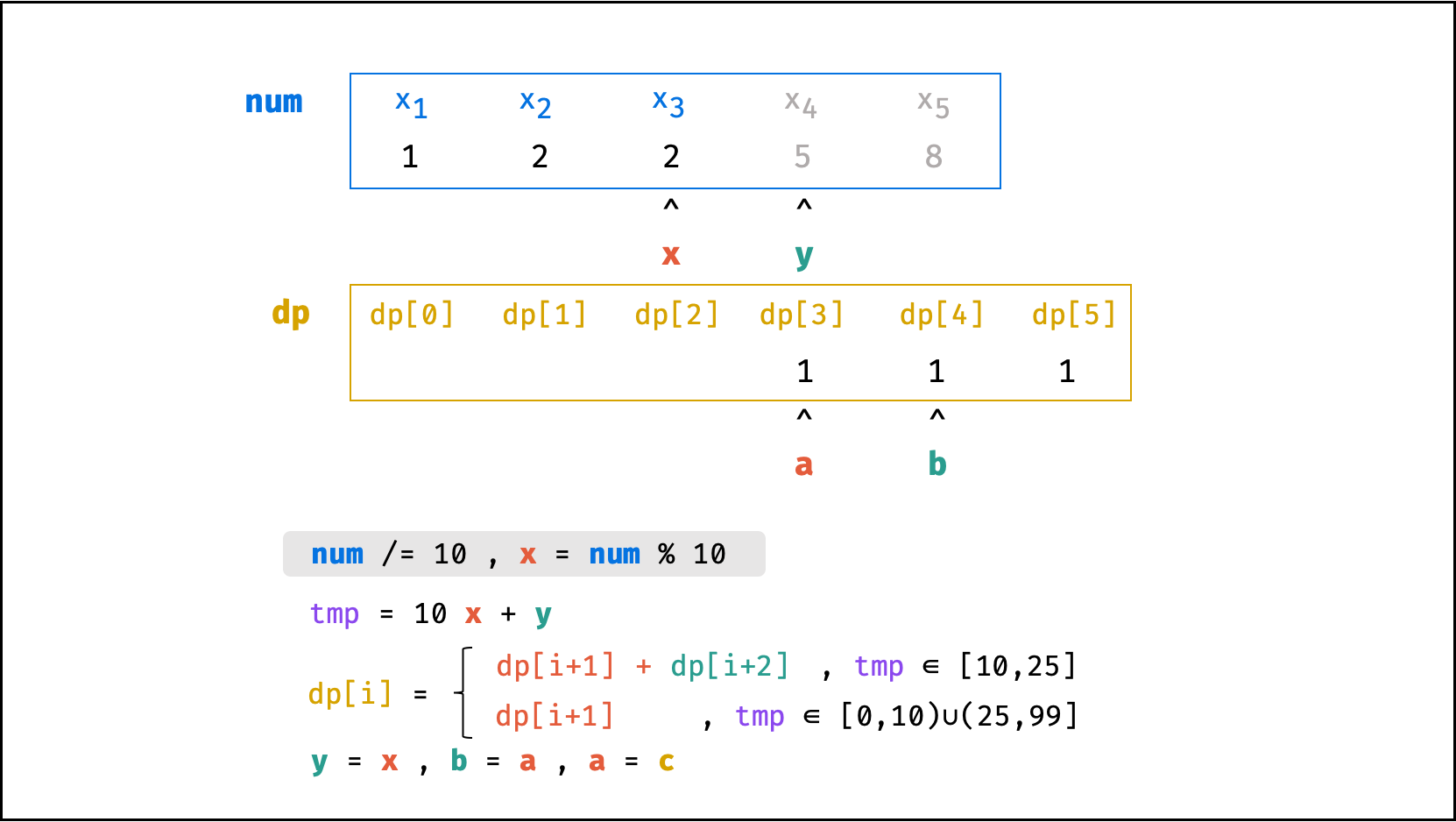 ,
,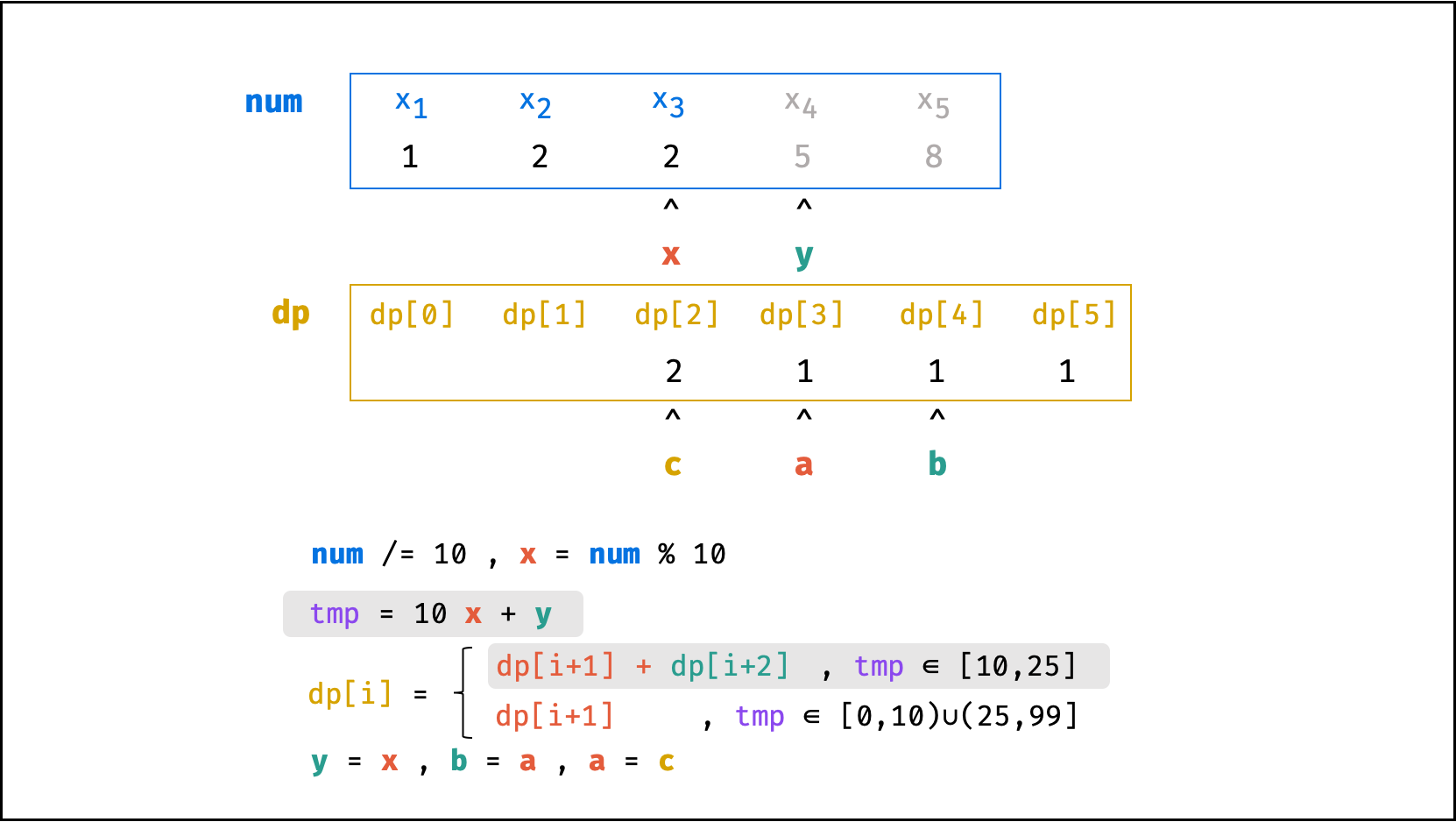 ,
,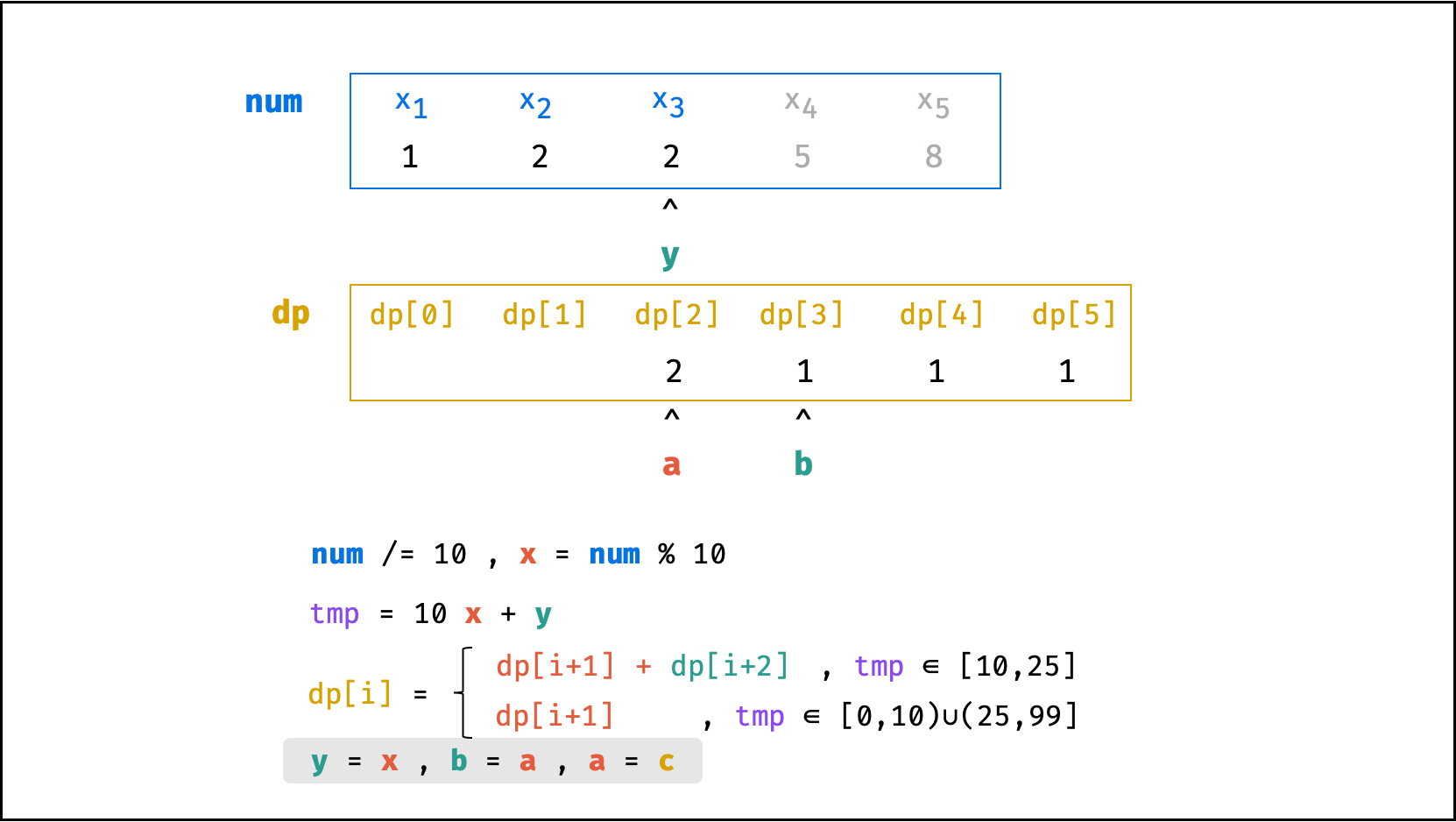 ,
,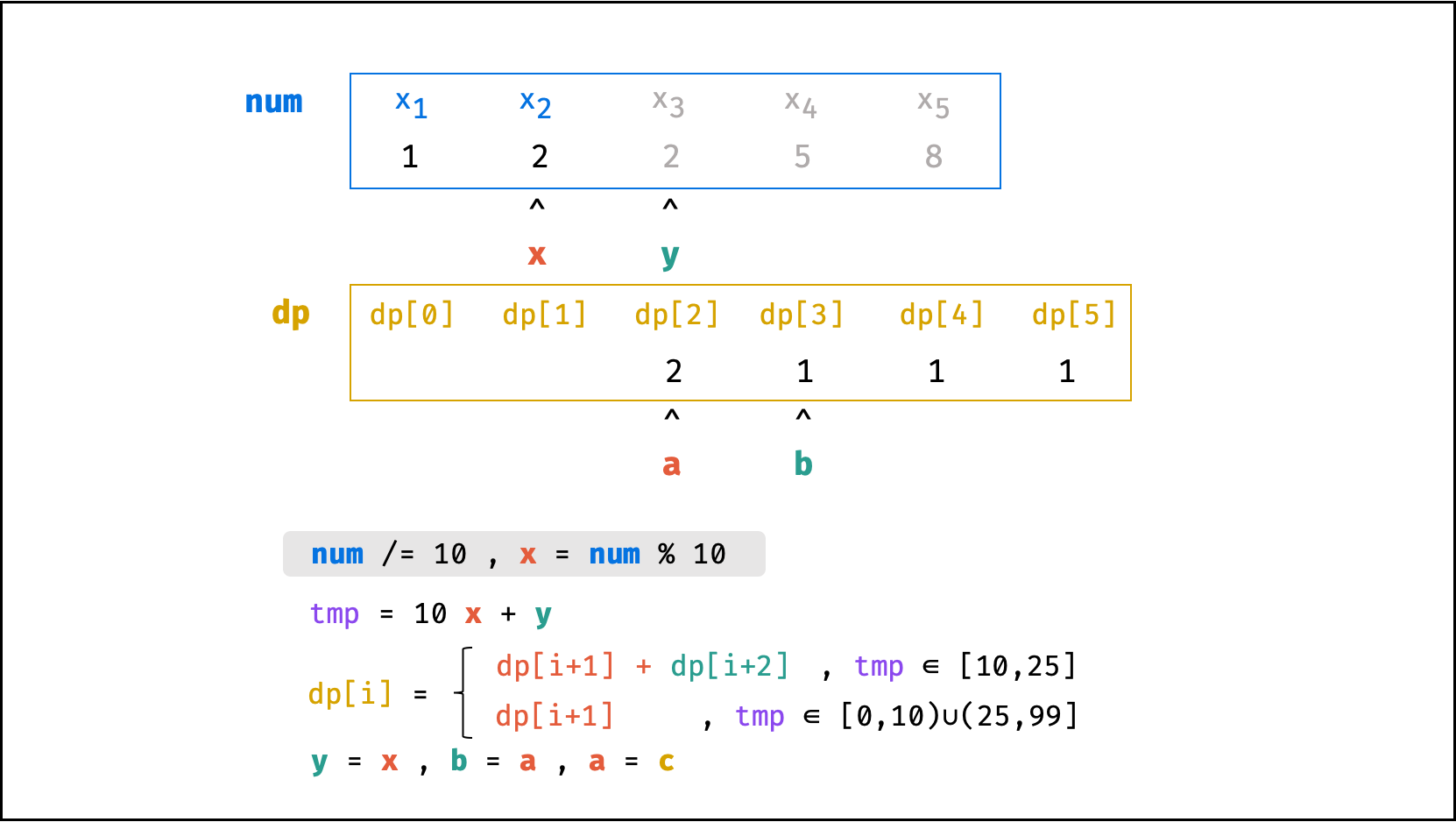 ,
,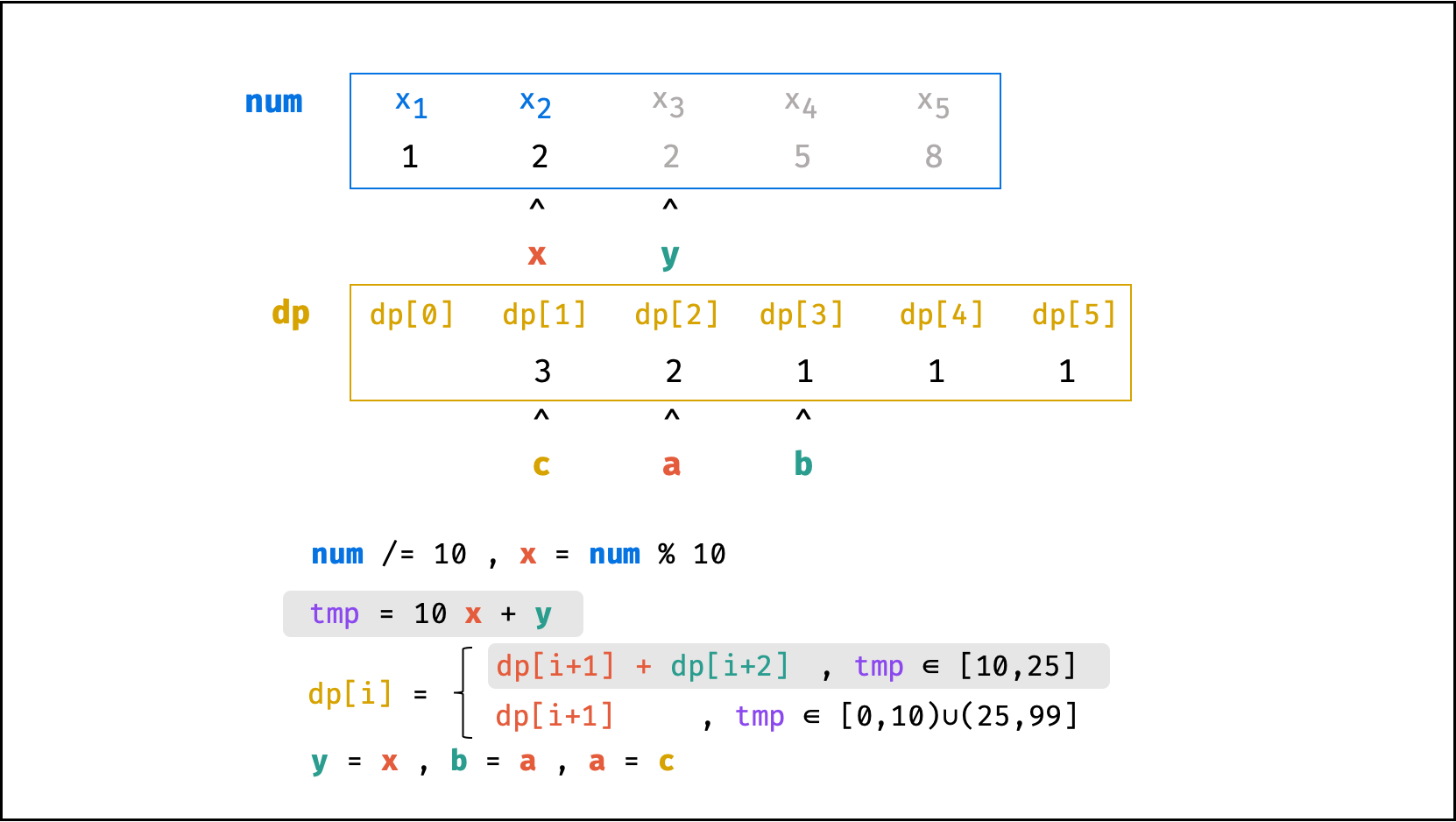 ,
,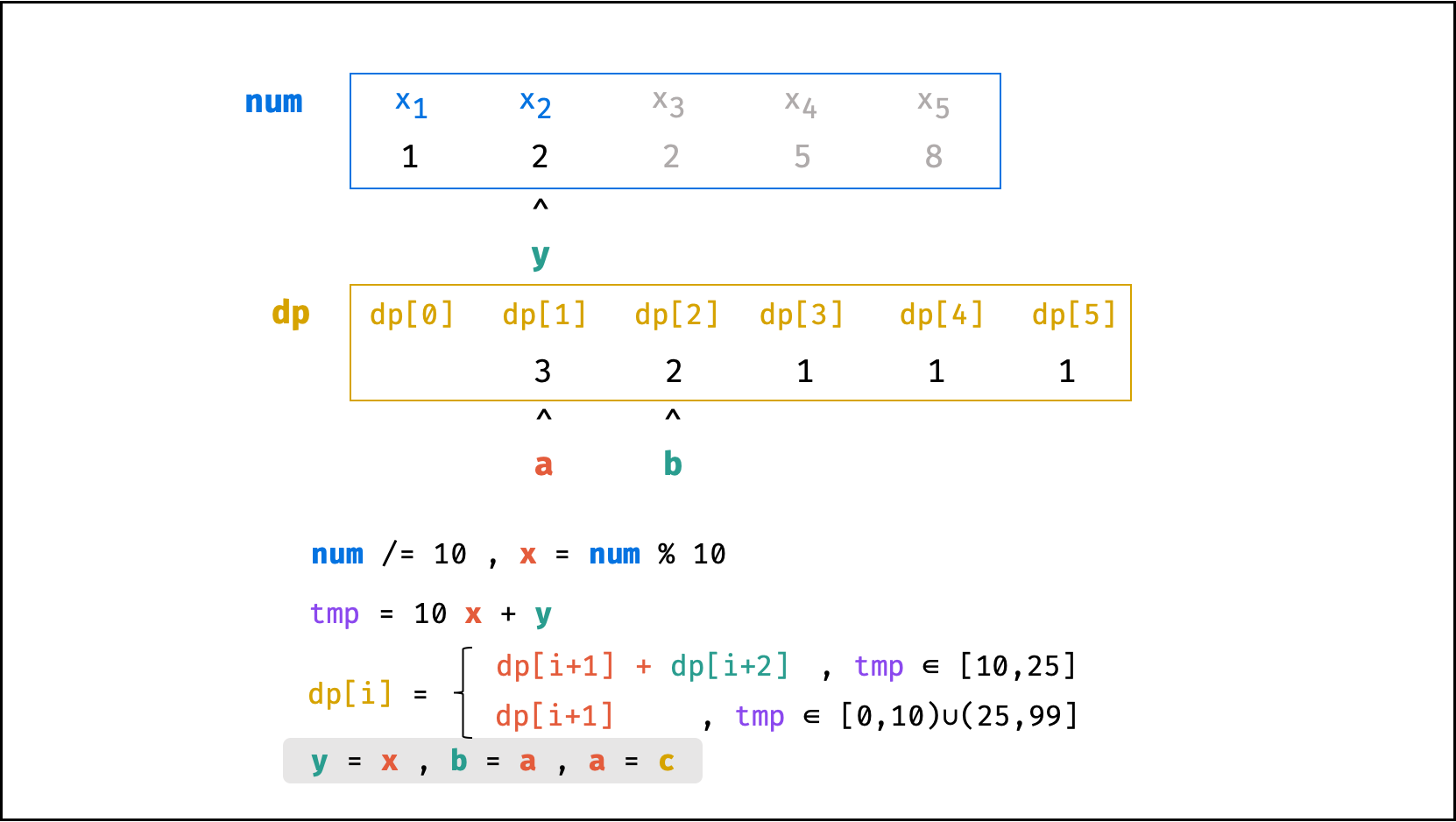 ,
,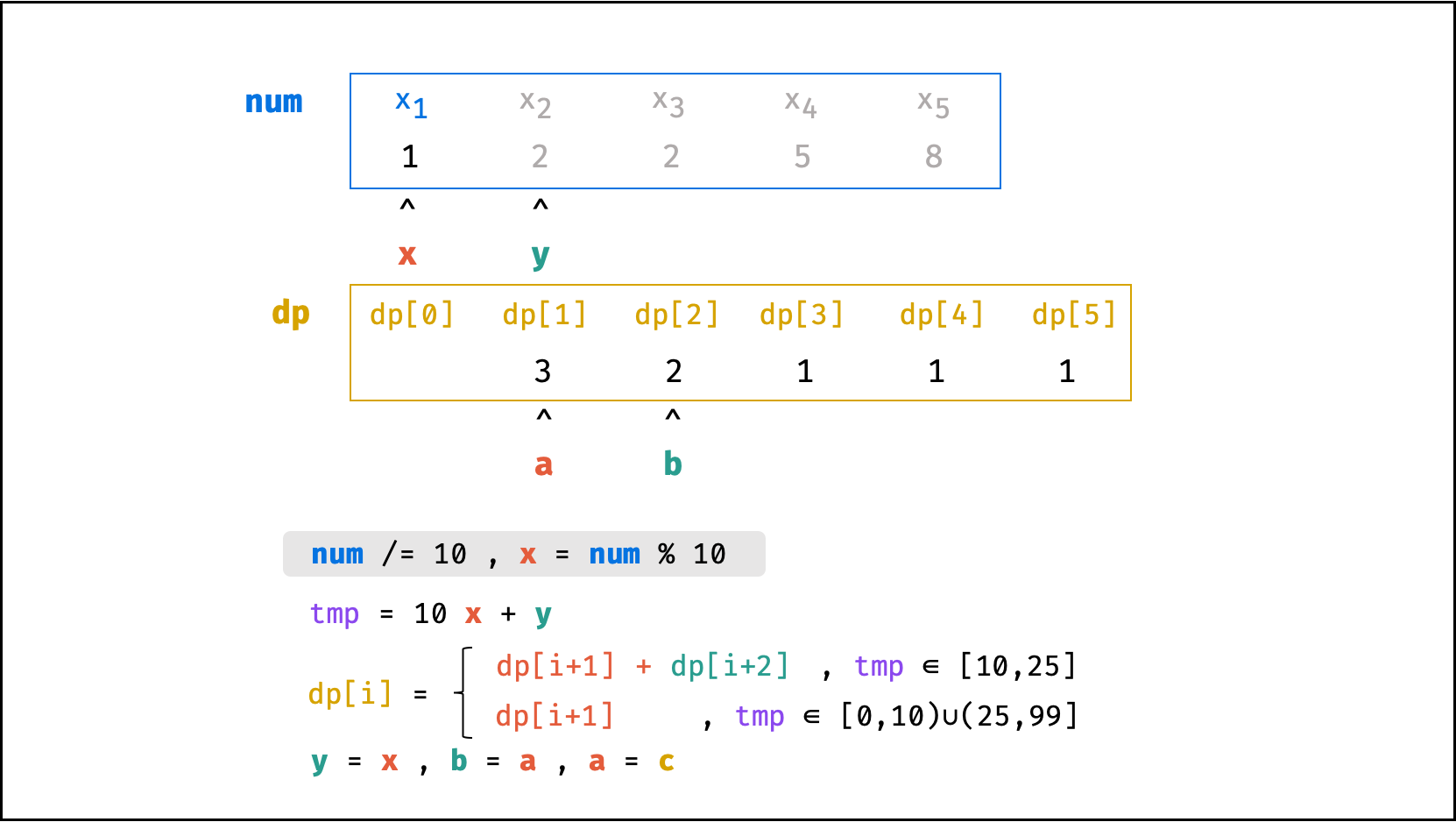 ,
,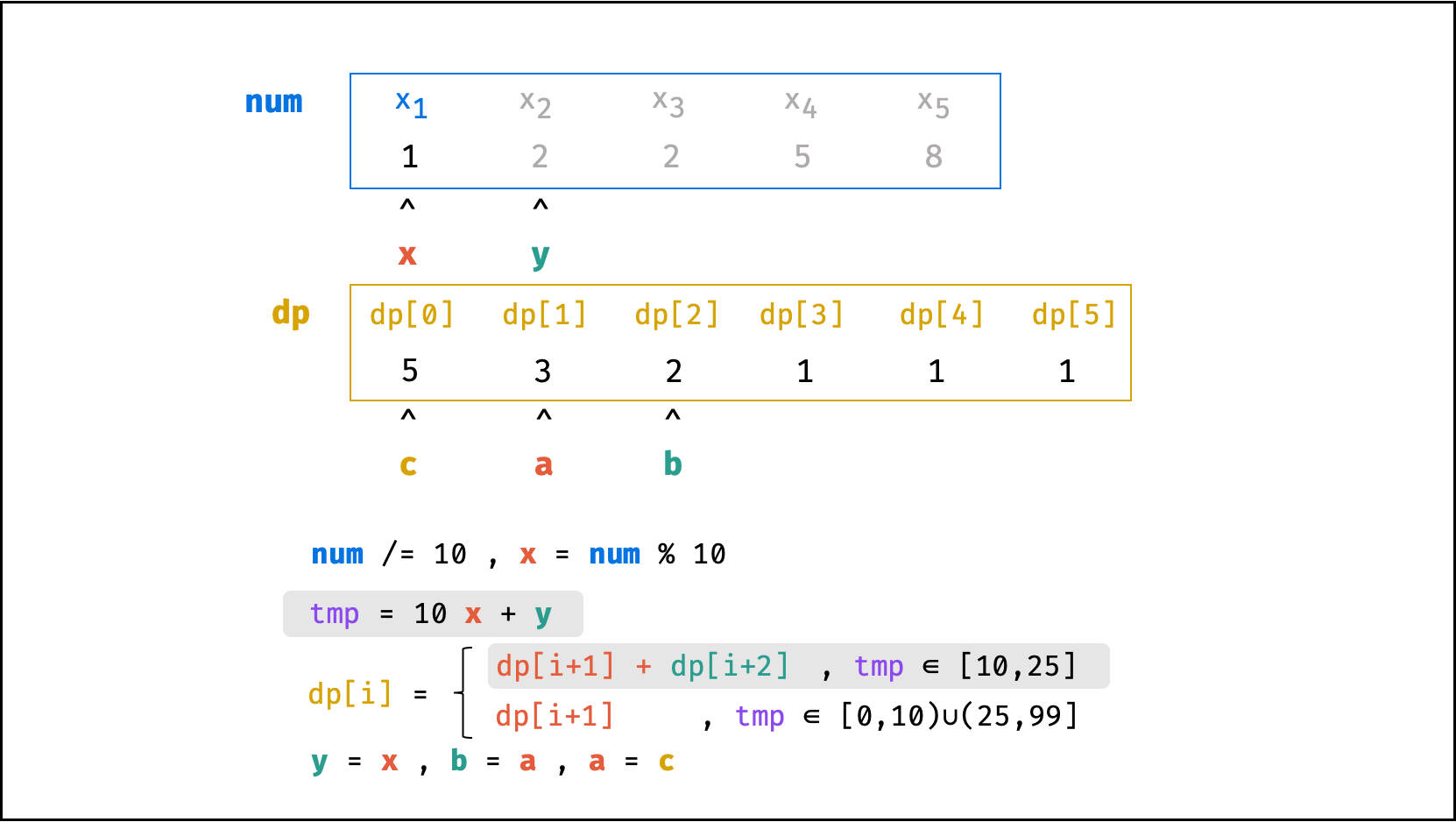 ,
, ,
,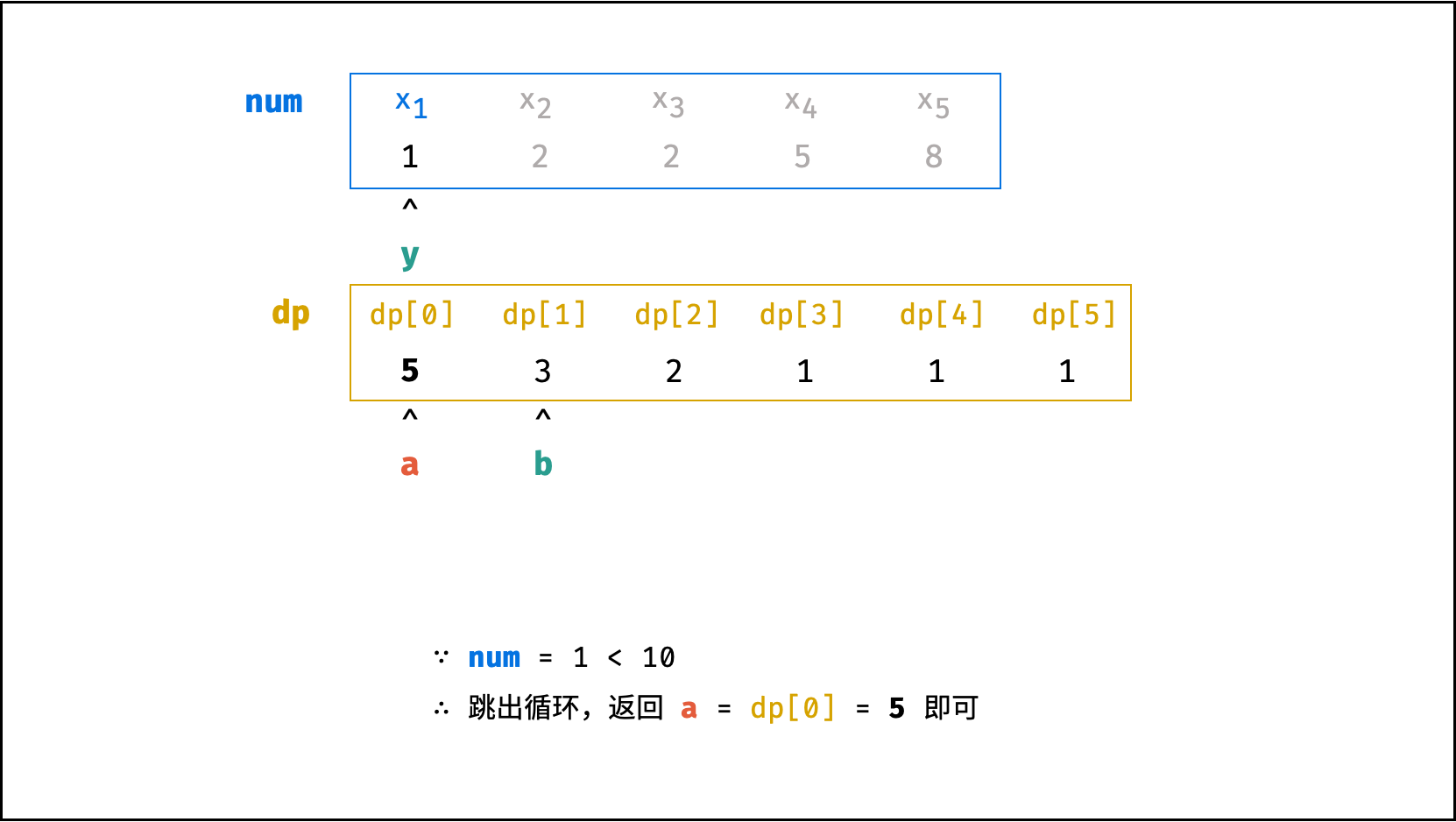 >
>
代码:
由于 Python 语言特性,可不使用临时变量 $tmp$ 和 $c$ ,若阅读不畅可转至第三栏代码。
class Solution {
public int translateNum(int num) {
int a = 1, b = 1, x, y = num % 10;
while(num > 9) {
num /= 10;
x = num % 10;
int tmp = 10 * x + y;
int c = (tmp >= 10 && tmp <= 25) ? a + b : a;
b = a;
a = c;
y = x;
}
return a;
}
}class Solution {
public:
int translateNum(int num) {
int a = 1, b = 1, x, y = num % 10;
while(num > 9) {
num /= 10;
x = num % 10;
int tmp = 10 * x + y;
int c = (tmp >= 10 && tmp <= 25) ? a + b : a;
b = a;
a = c;
y = x;
}
return a;
}
};class Solution:
def translateNum(self, num: int) -> int:
a = b = 1
y = num % 10
while num > 9:
num //= 10
x = num % 10
a, b = (a + b if 10 <= 10 * x + y <= 25 else a), a
y = x
return aclass Solution:
def translateNum(self, num: int) -> int:
a = b = 1
y = num % 10
while num > 9:
num //= 10
x = num % 10
tmp = 10 * x + y
c = a + b if 10 <= tmp <= 25 else a
a, b = c, a
y = x
return a